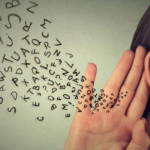THE TABLE OF EMOTIONS
Feelings and emotions accompany us throughout our entire existence. Each of us deals with them differently, and it is these feelings and emotions that make us unique, unrepeatable, and authentic individuals. This game highlights and makes us discover how each individual gives a different meaning to the same emotion, and reacts and moves differently to it. It helps us not to standardise behaviour and not to label children’s emotions according to their behaviour.
This activity can be proposed after the pupils have internalized the ability to recognise their moods and identify them in certain situations they experience during their routine.
HOW IT WORKS
Deliver to each pupil a sheet of paper (drawn as if it were the table a painter’s colour palette ) with various circles. In each circle a mood should be wroten by the children.
1. Give a small description of each reported emotion
2. Ask each child to choose a colour to match the reported emotion.
3. Ask each child to choose from the list 3 moods they think they have experienced.
4. Ask each child to think of and/or briefly describe three moments of their own life in which they have experienced the selected moods ( one situation for each emotion)
5. Play 3 different pieces of music previously chosen and ask each pupil to match the music with the three chosen moods.
6. Put and ask each child to move freely, interpreting the emotion they have chosen.
7. Ask the children to choose the one they like best and divide them into three groups. Each group corresponds to one piece of music.
8. Ask one group at a time to move to the music, asking them to think about their own emotion but with the possibility to interact with each other. After about 30 seconds ask them to compose a group photo. Repeat for all three groups.
Good luck with it!
“If you want to collaborate with us click here”


